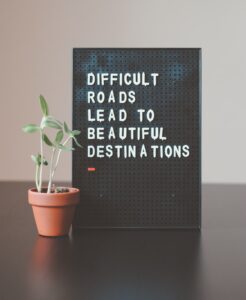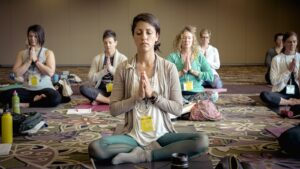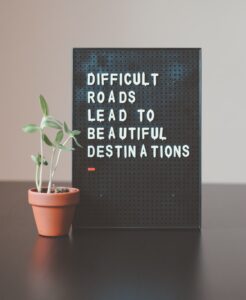TL;DR:
- Lifestyle Design is about intentionally shaping your life for fulfillment and purpose, contrasting traditional living.
- It can enhance well-being by improving health, mental state, and overall satisfaction.
- To start, self-assessment and goal setting are vital in creating a vision for your ideal lifestyle.
- Practical strategies involve organizing daily routines, focusing on what matters, and continuous learning.
- Sustaining this lifestyle entails overcoming challenges, perseverance, and a lifelong commitment to growth.
Introduction
In the modern age, ‘Lifestyle Design’ isn’t just a buzzword, it’s a necessity. It’s a consciously crafted blueprint for living that transcends trend. Many of us sail through life, tossed by its unpredictable waves, but what if you could design your life to enhance your well-being? Bringing my expertise in well-being and self-improvement, I will share 5 powerful steps to transform your life through lifestyle design. Come, join me on this journey of transformation, ridden with authenticity and informed by years of experience in fostering holistic well-being.
What exactly is Lifestyle Design?
Ever wondered if you could consciously tailor your life to align with your passions and goals? Welcome to the concept of Lifestyle Design. This progressive notion encourages individuals to take the reins of their own life, moving away from societal norms and expectations to pave their unique path.
Understanding the concept of Lifestyle Design
Lifestyle Design is a philosophic approach where you architect your life around what truly matters to you. It’s about prioritizing personal freedom, happiness, and growth above conventionally defined success. It pursues the belief that you have the power to sculpt your life as opposed to merely reacting to external circumstances.
Historical emergence and importance of Lifestyle Design
The concept dates back to Timothy Ferriss’s best-selling book, “The 4-Hour Workweek” published in 2008. Ferris introduced Lifestyle Design as the cornerstone of a fulfilling, balanced existence, sparking a global movement. This paradigm shift gained popularity due to its empowering premise – the potential to design your ideal life.
Lifestyle Design vs traditional living
Traditional living often involves following a predetermined path – education, job, family, and then retirement. Lifestyle Design, on the other hand, advocates for a life dictated by your passions and values; it’s a life that’s balanced and rewarding throughout, not just in the post-retirement phase. Unlike traditional living, Lifestyle Design unchains you from societal standards, letting you define the terms of your own existence.
Next section: How can Lifestyle Design enhance your well-being?
Note-
Timothy Ferriss’s best-selling book, “The 4-Hour Workweek”. (https://fourhourworkweek.com/)
“The 4-Hour Workweek” published in 2008. (https://www.goodreads.com/book/show/368593.The_4_Hour\_Workweek)
How can Lifestyle Design enhance your well-being?
Understanding the impact of Lifestyle Design on your well-being is central to comprehending its importance. It is not just about designing a life that suits your taste, but also about creating a pattern that enhances your overall well-being, health, and mental stability. Let’s delve deeper into how this works.
The correlation between Lifestyle Design and health
It is scientifically proven that the way you live your life drastically affects your health. A lifestyle built around bad habits can leave you prone to various health disabilities and diseases. With Lifestyle Design, you have the opportunity to design your daily routine around habits that lead to a healthier existence. According to the Mayo Clinic, practicing a healthy lifestyle design can help prevent chronic diseases and long-term illnesses. (Source)
Impact of Lifestyle Design on mental wellbeing
Aside from physical health, Lifestyle Design can also significantly impact mental health. According to a study published in American Journal of Public Health, a structured and balanced lifestyle can decrease the risk of mental distress. Incorporating practices exercising, eating healthy, good sleep patterns, social interactions, and breaks into your daily routine can cultivate mental resilience and reduce instances of stress, depression, and anxiety.
Examples of successful Lifestyle Design enhancing wellbeing
There are countless examples of individuals embracing Lifestyle Design and reaping the benefits. Consider Tim Ferriss, author of ‘The 4-Hour Workweek,’ who transformed his lifestyle and health by designing a successful digital nomad lifestyle. Similarly, wellness coach and blogger, Elizabeth Rider, successfully mapped out a lifestyle focused on healthy eating, exercise, and mindfulness practices, which revolutionised her overall well-being.
Lifestyle Design does not only support a more relaxed and enjoyable life but also bolsters the health both mentally and physically.
How to start your Lifestyle Design journey?
Diving into the realm of Lifestyle Design can seem daunting, but with the right mindset and tools, it becomes a fulfilling journey toward self-improvement. The initial phase is all about self-discovery and setting an achievable roadmap.
Self-assessment: Identifying what matters to you
The first step toward Lifestyle Design is identifying what truly matters to you. This calls for a rich introspective process where you assess your values, passions, and dreams. It could be a love for travel, a desire for financial freedom, or a passion for a particular cause. Tools like the Values Clarification can be instrumental in this step.
Setting realistic goals for your Lifestyle Design
Once you have identified your core values, the next step is goal setting. Having clear, concrete objectives guides your path and measures your progress. Opt for SMART (Specific, Measurable, Achievable, Relevant, Time-bound) goals to increase your chances for success. Mind Tools offer numerous resources on setting and achieving SMART goals.
Building a vision: Crafting your ideal lifestyle
With your values defined and goals set, the final step is constructing a vision of your ideal lifestyle. Here, visualization exercises and creation of a ‘vision board’ can be really useful. Envision your ideal day from dawn to dusk, and portray this vision on a board. This becomes a constant reminder of what you’re striving for in your Lifestyle Design journey.
What are the practical strategies to implement Lifestyle Design effectively?
When it comes to forming a new way of life, it takes more than just wishful thinking. Lifestyle Design demands practical and thoughtful strategies. This is how you transmute thoughts into reality and genuinely live the life you designed.
Streamlining your day-to-day life
The first step is to streamline your everyday activities. This implies you should declutter and minimalize your life, cutting out unnecessary tasks, and focusing on what adds value. Apps like Trello or Evernote can help you manage your time and organize your day effectively. This helps create space for fulfilling activities and contributes to stress reduction.
Embracing essentialism: Focusing on what truly matters
Following the concept of essentialism is an integral part of Lifestyle Design. Essentialism involves focusing on the most critical aspects of your life and willingly letting go of the rest. This approach creates room for what truly matters, leading to higher satisfaction levels and an overall better quality of life. Greg McKeown’s book ‘Essentialism: The Disciplined Pursuit of Less’ provides insightful guidance in mastering this art and techniques to savor life more fully.
The role of continuous learning and adaptation in Lifestyle Design
Lastly, it’s crucial to acknowledge the importance of continuous learning and adaptation. The concept of Lifestyle Design is not a one-size-fits-all solution. It demands consistent learning and making changes based on your current situation and future goals. Websites like Coursera and Edx offer a myriad of free classes ranging from personal development to finance to help you keep learning. Whether it’s a new skill or a different mindset, adapting to change can pave the way for a more purposeful life.
In conclusion, effective Lifestyle Design integrates streamlining, essentialism, learning, and adaptation; these strategies can simplify your journey towards a more fulfilling lifestyle.
How to sustain your newly designed lifestyle?
Embracing a new lifestyle design can be empowering, but maintaining it over the long run presents its own set of challenges. Let’s explore how to overcome these hurdles and sustain your Lifestyle Design.
Overcoming challenges in maintaining your Lifestyle Design
Every journey has its fair share of stumbling blocks. As you embark upon lifestyle design, you may face obstacles such as uncertainty, fear of change or difficulty in adapting to new routines. But remember, every challenge presents an opportunity for growth. Incorporating strategies such as prioritizing self-care, maintaining a supportive network and developing resilience can help manage these challenges effectively. For in-depth understanding of dealing with life challenges, [“Psychology Today”](https://www.psychologytoday.com/us/blog/what-mentally-strong-people-dont-do/201501/5-ways-overcome-challenges) shares insightful strategies.
The importance of perseverance and flexibility
To sustain your desired lifestyle, you need to remain flexible and adaptable to changes that life throws at you. It’s crucial to keep your vision in mind, but also be open to revising your path when necessary. Perseverance is equally crucial, as the transformation won’t happen overnight. [James Clear](https://jamesclear.com/perseverance), an expert in habit formation, provides useful advice on developing these traits.
Lifestyle Design: A lifelong commitment
Lifestyle design isn’t just a temporary phase but a lifelong commitment towards improved well-being and self-realization. It’s about embracing your values, priorities and dreams and integrating them into your daily life. Remember, it’s a journey of continuous learning, growing and adapting for enhancing your quality of life. It requires patience, diligence, and a little creativity along the way to consistently live in alignment with your ideal lifestyle.
Conclusion:
In the realm of Lifestyle Design, incorporating these 5 transformative steps has the power to revamp your well-being holistically. Crafting a personalized blueprint that aligns with your values and aspirations is the cornerstone of this journey. By embracing mindfulness, setting intentional goals, fostering meaningful connections, prioritizing self-care, and optimizing productivity, you pave the way for a harmonious lifestyle. With Lifestyle Design as your compass, you can steer towards a fulfilling existence that resonates with your true self. Dive deeper into this enriching realm and explore the myriad possibilities awaiting your discovery.















